
IPO Allotment Status
The IPO allotment status informs investors on the quantity of shares awarded to them in an initial public ... offering (IPO). The IPO registrar is in charge of the allotment process. The date that the allocation status is made public on the IPO registrar's website is known as the "IPO allotment date", which is an essential part of the IPO process.(+)
- Issue Date 28 Mar - 3 Apr
- Allotment Date 04-Apr-25
- Price Range ₹ 79
- IPO Size ₹ 24.71 Cr
- Issue Date 28 Mar - 3 Apr
- Allotment Date 04-Apr-25
- Price Range ₹ 51
- IPO Size ₹ 10.17 Cr
- Issue Date 27 Mar - 2 Apr
- Allotment Date 03-Apr-25
- Price Range ₹ 25
- IPO Size ₹ 15.5 Cr
- Issue Date 26 Mar - 28 Mar
- Allotment Date 01-Apr-25
- Price Range ₹ 54
- IPO Size ₹ 16.63 Cr
- Issue Date 25 Mar - 27 Mar
- Allotment Date 28-Mar-25
- Price Range ₹ 118
- IPO Size ₹ 63.76 Cr
- Issue Date 25 Mar - 27 Mar
- Allotment Date 28-Mar-25
- Price Range ₹ 119
- IPO Size ₹ 73.81 Cr
- Issue Date 24 Mar - 26 Mar
- Allotment Date 27-Mar-25
- Price Range ₹ 150
- IPO Size ₹ 30.75 Cr
- Issue Date 21 Mar - 25 Mar
- Allotment Date 26-Mar-25
- Price Range ₹ 181
- IPO Size ₹ 77.83 Cr
- Issue Date 21 Mar - 25 Mar
- Allotment Date 26-Mar-25
- Price Range ₹ 192
- IPO Size ₹ 43.87 Cr
- Issue Date 20 Mar - 24 Mar
- Allotment Date 25-Mar-25
- Price Range ₹ 113
- IPO Size ₹ 74.46 Cr
- Issue Date 17 Mar - 19 Mar
- Allotment Date 20-Mar-25
- Price Range ₹ 98
- IPO Size ₹ 44.86 Cr
- Issue Date 17 Mar - 19 Mar
- Allotment Date 20-Mar-25
- Price Range ₹ 90
- IPO Size ₹ 31.84 Cr
- Issue Date 11 Mar - 13 Mar
- Allotment Date 17-Mar-25
- Price Range ₹ 108
- IPO Size ₹ 68.05 Cr
- Issue Date 10 Mar - 12 Mar
- Allotment Date 13-Mar-25
- Price Range ₹ 135
- IPO Size ₹ 12.65 Cr
- Issue Date 4 Mar - 6 Mar
- Allotment Date 07-Mar-25
- Price Range ₹ 90
- IPO Size ₹ 11.88 Cr
- Issue Date 28 Feb - 4 Mar
- Allotment Date 05-Mar-25
- Price Range ₹ 70
- IPO Size ₹ 50.11 Cr
- Issue Date 25 Feb - 28 Feb
- Allotment Date 03-Mar-25
- Price Range ₹ 44
- IPO Size ₹ 23.36 Cr
- Issue Date 24 Feb - 27 Feb
- Allotment Date 28-Feb-25
- Price Range ₹ 234
- IPO Size ₹ 31.7 Cr
- Issue Date 21 Feb - 25 Feb
- Allotment Date 27-Feb-25
- Price Range ₹ 175
- IPO Size ₹ 59.93 Cr
- Issue Date 20 Feb - 24 Feb
- Allotment Date 25-Feb-25
- Price Range ₹ 94
- IPO Size ₹ 14.92 Cr
- Issue Date 20 Feb - 24 Feb
- Allotment Date 25-Feb-25
- Price Range ₹ 108
- IPO Size ₹ 34.23 Cr

- Issue Date 14 Feb - 18 Feb
- Allotment Date 19-Feb-25
- Price Range ₹ 401 to ₹ 425
- IPO Size ₹ 858.70 Cr
- Issue Date 14 Feb - 18 Feb
- Allotment Date 19-Feb-25
- Price Range ₹ 120
- IPO Size ₹ 36 Cr
- Issue Date 14 Feb - 18 Feb
- Allotment Date 19-Feb-25
- Price Range ₹ 168
- IPO Size ₹ 105.84 Cr
- Issue Date 13 Feb - 17 Feb
- Allotment Date 18-Feb-25
- Price Range ₹ 54
- IPO Size ₹ 20.62 Cr
- Issue Date 13 Feb - 17 Feb
- Allotment Date 18-Feb-25
- Price Range ₹ 71
- IPO Size ₹ 7.38 Cr

- Issue Date 12 Feb - 14 Feb
- Allotment Date 17-Feb-25
- Price Range ₹ 674 to ₹ 708
- IPO Size ₹ 8750.00 Cr
- Issue Date 12 Feb - 14 Feb
- Allotment Date 17-Feb-25
- Price Range ₹ 180
- IPO Size ₹ 54 Cr
- Issue Date 12 Feb - 14 Feb
- Allotment Date 17-Feb-25
- Price Range ₹ 90
- IPO Size ₹ 27 Cr
- Issue Date 12 Feb - 14 Feb
- Allotment Date 17-Feb-25
- Price Range ₹ 140
- IPO Size ₹ 28.28 Cr

- Issue Date 10 Feb - 12 Feb
- Allotment Date 13-Feb-25
- Price Range ₹ 599 to ₹629
- IPO Size ₹ 1269.35 Cr
- Issue Date 10 Feb - 12 Feb
- Allotment Date 13-Feb-25
- Price Range ₹ 159
- IPO Size ₹ 106.99 Cr
- Issue Date 7 Feb - 11 Feb
- Allotment Date 12-Feb-25
- Price Range ₹ 130
- IPO Size ₹ 78.07 Cr
- Issue Date 6 Feb - 10 Feb
- Allotment Date 11-Feb-25
- Price Range ₹ 191
- IPO Size ₹ 105.04 Cr
- Issue Date 6 Feb - 10 Feb
- Allotment Date 11-Feb-25
- Price Range ₹ 123
- IPO Size ₹ 37.66 Cr
- Issue Date 5 Feb - 7 Feb
- Allotment Date 10-Feb-25
- Price Range ₹ 111
- IPO Size ₹ 59.98 Cr
- Issue Date 5 Feb - 7 Feb
- Allotment Date 10-Feb-25
- Price Range ₹ 94
- IPO Size ₹ 83.65 Cr
- Issue Date 4 Feb - 6 Feb
- Allotment Date 07-Feb-25
- Price Range ₹ 50
- IPO Size ₹ 14.6 Cr

- Issue Date 29 Jan - 31 Jan
- Allotment Date 03-Feb-25
- Price Range ₹ 382 to ₹ 402
- IPO Size ₹ 3027.26 Cr
- Issue Date 29 Jan - 31 Jan
- Allotment Date 03-Feb-25
- Price Range ₹ 90
- IPO Size ₹ 25.92 Cr
- Issue Date 24 Jan - 28 Jan
- Allotment Date 29-Jan-25
- Price Range ₹ 75
- IPO Size ₹ 27.74 Cr
- Issue Date 24 Jan - 28 Jan
- Allotment Date 29-Jan-25
- Price Range ₹ 102
- IPO Size ₹ 25.07 Cr
- Issue Date 23 Jan - 27 Jan
- Allotment Date 28-Jan-25
- Price Range ₹ 250
- IPO Size ₹ 72.3 Cr

- Issue Date 22 Jan - 24 Jan
- Allotment Date 27-Jan-25
- Price Range ₹ 279 to ₹ 294
- IPO Size ₹ 220.50 Cr
- Issue Date 22 Jan - 24 Jan
- Allotment Date 27-Jan-25
- Price Range ₹ 145
- IPO Size ₹ 53.65 Cr
- Issue Date 20 Jan - 22 Jan
- Allotment Date 23-Jan-25
- Price Range ₹ 263
- IPO Size ₹ 169.37 Cr
- Issue Date 17 Jan - 21 Jan
- Allotment Date 22-Jan-25
- Price Range ₹ 124
- IPO Size ₹ 76.01 Cr

- Issue Date 16 Jan - 20 Jan
- Allotment Date 21-Jan-25
- Price Range ₹ 85 to ₹ 90
- IPO Size ₹ 199.45 Cr
- Issue Date 16 Jan - 20 Jan
- Allotment Date 21-Jan-25
- Price Range ₹ 72
- IPO Size ₹ 40.32 Cr
- Issue Date 15 Jan - 17 Jan
- Allotment Date 20-Jan-25
- Price Range ₹ 128
- IPO Size ₹ 40 Cr
- Issue Date 15 Jan - 17 Jan
- Allotment Date 20-Jan-25
- Price Range ₹ 86
- IPO Size ₹ 88.82 Cr

- Issue Date 13 Jan - 15 Jan
- Allotment Date 16-Jan-25
- Price Range ₹ 407 to ₹ 428
- IPO Size ₹ 698.06 Cr
- Issue Date 10 Jan - 15 Jan
- Allotment Date 16-Jan-25
- Price Range ₹ 60
- IPO Size ₹ 39.41 Cr
- Issue Date 10 Jan - 14 Jan
- Allotment Date 15-Jan-25
- Price Range ₹ 81
- IPO Size ₹ 33.8 Cr

- Issue Date 7 Jan - 9 Jan
- Allotment Date 10-Jan-25
- Price Range ₹ 275 to ₹ 290
- IPO Size ₹ 290.00 Cr

- Issue Date 7 Jan - 9 Jan
- Allotment Date 10-Jan-25
- Price Range ₹ 99 to ₹ 100
- IPO Size ₹ 1578.00 Cr
- Issue Date 7 Jan - 9 Jan
- Allotment Date 10-Jan-25
- Price Range ₹ 130
- IPO Size ₹ 54.6 Cr
- Issue Date 7 Jan - 9 Jan
- Allotment Date 10-Jan-25
- Price Range ₹ 135
- IPO Size ₹ 85.21 Cr
- Issue Date 7 Jan - 9 Jan
- Allotment Date 10-Jan-25
- Price Range ₹ 70
- IPO Size ₹ 1.92 Cr

- Issue Date 6 Jan - 8 Jan
- Allotment Date 09-Jan-25
- Price Range ₹ 133 to ₹ 140
- IPO Size ₹ 410.05 Cr
- Issue Date 6 Jan - 8 Jan
- Allotment Date 09-Jan-25
- Price Range ₹ 46
- IPO Size ₹ 10.14 Cr
- Issue Date 3 Jan - 7 Jan
- Allotment Date 08-Jan-25
- Price Range ₹ 85
- IPO Size ₹ 27.74 Cr
- Issue Date 2 Jan - 6 Jan
- Allotment Date 07-Jan-25
- Price Range ₹ 61
- IPO Size ₹ 24.74 Cr
- Issue Date 2 Jan - 6 Jan
- Allotment Date 07-Jan-25
- Price Range ₹ 55
- IPO Size ₹ 8.78 Cr
- Issue Date 1 Jan - 3 Jan
- Allotment Date 06-Jan-25
- Price Range ₹ 52
- IPO Size ₹ 25.12 Cr

- Issue Date 31 Dec - 2 Jan
- Allotment Date 03-Jan-25
- Price Range ₹ 204 to ₹ 215
- IPO Size ₹ 260.15 Cr
- Issue Date 31 Dec - 2 Jan
- Allotment Date 03-Jan-25
- Price Range ₹ 55
- IPO Size ₹ 25.25 Cr
- Issue Date 27 Dec - 31 Dec
- Allotment Date 01-Jan-25
- Price Range ₹ 70
- IPO Size ₹ 12.6 Cr
- Issue Date 26 Dec - 30 Dec
- Allotment Date 31-Dec-24
- Price Range ₹ 14
- IPO Size ₹ 44.8 Cr

- Issue Date 23 Dec - 26 Dec
- Allotment Date 27-Dec-24
- Price Range ₹ 745 to ₹ 785
- IPO Size ₹ 500.00 Cr

- Issue Date 20 Dec - 24 Dec
- Allotment Date 26-Dec-24
- Price Range ₹ 372 to ₹ 391
- IPO Size ₹ 582.11 Cr

- Issue Date 20 Dec - 24 Dec
- Allotment Date 26-Dec-24
- Price Range ₹ 610 to ₹ 643
- IPO Size ₹ 1600.00 Cr

- Issue Date 20 Dec - 24 Dec
- Allotment Date 26-Dec-24
- Price Range ₹ 668 to ₹ 704
- IPO Size ₹ 1250.00 Cr
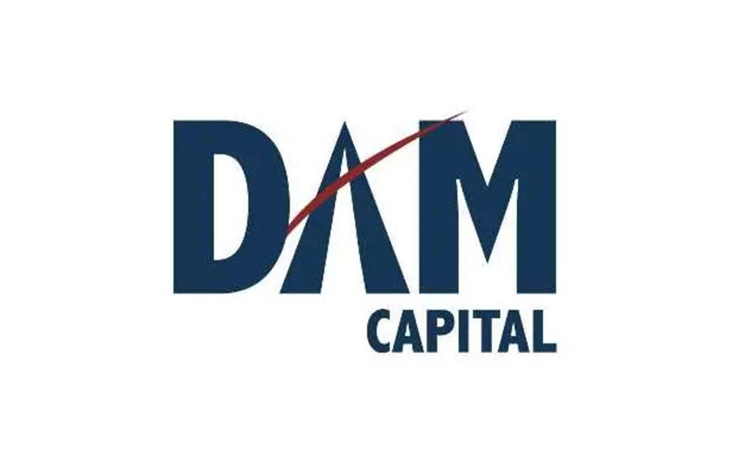
- Issue Date 19 Dec - 23 Dec
- Allotment Date 24-Dec-24
- Price Range ₹ 269 - ₹ 283
- IPO Size ₹ 840.25 Cr

- Issue Date 19 Dec - 23 Dec
- Allotment Date 24-Dec-24
- Price Range ₹ 230 - ₹ 243
- IPO Size ₹ 179.39 Cr

- Issue Date 19 Dec - 23 Dec
- Allotment Date 24-Dec-24
- Price Range ₹ 305 - ₹ 321
- IPO Size ₹ 550.00 Cr

- Issue Date 19 Dec - 23 Dec
- Allotment Date 24-Dec-24
- Price Range ₹ 665 - ₹ 701
- IPO Size ₹ 500.33 Cr

- Issue Date 19 Dec - 23 Dec
- Allotment Date 24-Dec-24
- Price Range ₹ 410 - ₹ 432
- IPO Size ₹ 838.91 Cr
- Issue Date 19 Dec - 23 Dec
- Allotment Date 24-Dec-24
- Price Range ₹ 90
- IPO Size ₹ 41.76 Cr
- Issue Date 18 Dec - 20 Dec
- Allotment Date 23-Dec-24
- Price Range ₹ 54
- IPO Size ₹ 19.95 Cr
- Issue Date 17 Dec - 19 Dec
- Allotment Date 20-Dec-24
- Price Range ₹ 35
- IPO Size ₹ 10.01 Cr

- Issue Date 13 Dec - 17 Dec
- Allotment Date 18-Dec-24
- Price Range ₹ 397 - ₹ 417
- IPO Size ₹ 4225.00 Cr
- Issue Date 13 Dec - 17 Dec
- Allotment Date 18-Dec-24
- Price Range ₹ 51
- IPO Size ₹ 6.22 Cr

- Issue Date 12 Dec - 16 Dec
- Allotment Date 17-Dec-24
- Price Range ₹ 1265 - ₹ 1329
- IPO Size ₹ 2497.92 Cr
- Issue Date 12 Dec - 16 Dec
- Allotment Date 17-Dec-24
- Price Range ₹ 146
- IPO Size ₹ 110.01 Cr

- Issue Date 11 Dec - 13 Dec
- Allotment Date 16-Dec-24
- Price Range ₹ 265 - ₹ 279
- IPO Size ₹ 572.00 Cr

- Issue Date 11 Dec - 13 Dec
- Allotment Date 16-Dec-24
- Price Range ₹ 522 - ₹ 549
- IPO Size ₹ 3042.62 Cr

- Issue Date 11 Dec - 13 Dec
- Allotment Date 16-Dec-24
- Price Range ₹ 74 - ₹ 78
- IPO Size ₹ 8000 Cr
- Issue Date 11 Dec - 13 Dec
- Allotment Date 16-Dec-24
- Price Range ₹ 126
- IPO Size ₹ 32.81 Cr
- Issue Date 11 Dec - 13 Dec
- Allotment Date 16-Dec-24
- Price Range ₹ 76
- IPO Size ₹ 50 Cr
- Issue Date 10 Dec - 12 Dec
- Allotment Date 13-Dec-24
- Price Range ₹ 182
- IPO Size ₹ 9.17 Cr
- Issue Date 10 Dec - 12 Dec
- Allotment Date 13-Dec-24
- Price Range ₹ 72
- IPO Size ₹ 29.42 Cr

- Issue Date 6 Nov - 8 Nov
- Allotment Date 13-Dec-24
- Price Range ₹ 792
- IPO Size ₹ 7000 Cr
- Issue Date 9 Dec - 11 Dec
- Allotment Date 12-Dec-24
- Price Range ₹ 55
- IPO Size ₹ 23.8 Cr
- Issue Date 5 Dec - 9 Dec
- Allotment Date 10-Dec-24
- Price Range ₹ 95
- IPO Size ₹ 49.26 Cr
- Issue Date 4 Dec - 6 Dec
- Allotment Date 09-Dec-24
- Price Range ₹ 180
- IPO Size ₹ 114.24 Cr

- Issue Date 29 Nov - 3 Dec
- Allotment Date 04-Dec-24
- Price Range ₹ 420 to ₹ 441
- IPO Size ₹ 846.25 Cr
- Issue Date 29 Nov - 3 Dec
- Allotment Date 04-Dec-24
- Price Range ₹ 83
- IPO Size ₹ 98.58 Cr
- Issue Date 28 Nov - 2 Dec
- Allotment Date 03-Dec-24
- Price Range ₹ 108
- IPO Size ₹ 62.64 Cr
- Issue Date 27 Nov - 29 Nov
- Allotment Date 02-Dec-24
- Price Range ₹ 75
- IPO Size ₹ 38.54 Cr

- Issue Date 22 Nov - 26 Nov
- Allotment Date 27-Nov-24
- Price Range ₹ 140 - ₹ 148
- IPO Size ₹ 650.43 Cr

- Issue Date 19 Nov - 22 Nov
- Allotment Date 25-Nov-24
- Price Range ₹ 102 - ₹ 108
- IPO Size ₹ 10000 Cr

- Issue Date 13 Nov - 18 Nov
- Allotment Date 19-Nov-24
- Price Range ₹ 259 - ₹ 273
- IPO Size ₹ 1114.72 Cr

- Issue Date 7 Nov - 11 Nov
- Allotment Date 12-Nov-24
- Price Range ₹ 70 to ₹ 74
- IPO Size ₹ 2200 Cr

- Issue Date 6 Nov - 8 Nov
- Allotment Date 11-Nov-24
- Price Range ₹ 275 to ₹ 289
- IPO Size ₹ 3000 Cr

- Issue Date 6 Nov - 8 Nov
- Allotment Date 11-Nov-24
- Price Range ₹ 371 - ₹ 390
- IPO Size ₹ 11327.43 Cr

- Issue Date 5 Nov - 7 Nov
- Allotment Date 08-Nov-24
- Price Range ₹ 28 to ₹ 30
- IPO Size ₹ 2106.60 Cr

- Issue Date 25 Oct - 29 Oct
- Allotment Date 30-Oct-24
- Price Range ₹ 440 to ₹ 463
- IPO Size ₹ 5430.00 Cr

- Issue Date 23 Oct - 25 Oct
- Allotment Date 28-Oct-24
- Price Range ₹ 334 to ₹ 352
- IPO Size ₹ 554.75 Cr

- Issue Date 21 Oct - 23 Oct
- Allotment Date 24-Oct-24
- Price Range ₹ 1427 - ₹ 1503
- IPO Size ₹ 4321.44 Cr

- Issue Date 21 Oct - 23 Oct
- Allotment Date 24-Oct-24
- Price Range ₹ 192 - ₹203
- IPO Size ₹ 260.04 Cr

- Issue Date 15 Oct - 17 Oct
- Allotment Date 18-Oct-24
- Price Range ₹ 1865 to ₹ 1960
- IPO Size ₹ 27870.16 Cr

- Issue Date 8 Oct - 10 Oct
- Allotment Date 11-Oct-24
- Price Range ₹ 92 to ₹ 95
- IPO Size ₹ 264.10 Cr

- Issue Date 26 Sep - 30 Sep
- Allotment Date 01-Oct-24
- Price Range ₹ 159 to ₹ 168
- IPO Size ₹ 158 Cr

- Issue Date 25 Sep - 27 Sep
- Allotment Date 30-Sep-24
- Price Range ₹ 209 to ₹ 220
- IPO Size ₹ 341.95 Cr

- Issue Date 23 Sep - 25 Sep
- Allotment Date 26-Sep-24
- Price Range ₹ 114 to ₹120
- IPO Size ₹ 150.84 Cr

- Issue Date 16 Sep - 19 Sep
- Allotment Date 20-Sep-24
- Price Range ₹ 249 to ₹ 263
- IPO Size ₹ 777.00 Cr

- Issue Date 13 Sep - 19 Sep
- Allotment Date 20-Sep-24
- Price Range ₹ 163 to ₹ 172
- IPO Size ₹ 492.88 Cr

- Issue Date 16 Sep - 19 Sep
- Allotment Date 20-Sep-24
- Price Range ₹ 121 to ₹ 128
- IPO Size ₹ 410.00 Cr

- Issue Date 10 Sep - 12 Sep
- Allotment Date 13-Sep-24
- Price Range ₹ 456 to ₹ 480
- IPO Size ₹ 1,100.00 Cr

- Issue Date 9 Sep - 11 Sep
- Allotment Date 12-Sep-24
- Price Range ₹ 228 to ₹ 240
- IPO Size ₹ 500.00 Cr

- Issue Date 9 Sep - 11 Sep
- Allotment Date 12-Sep-24
- Price Range ₹ 215 to ₹ 226
- IPO Size ₹ 230.00 Cr

- Issue Date 9 Sep - 11 Sep
- Allotment Date 12-Sep-24
- Price Range ₹ 66 to ₹ 70
- IPO Size ₹ 6,560.00 Cr

- Issue Date 5 Sep - 9 Sep
- Allotment Date 10-Sep-24
- Price Range ₹ 78 to ₹83
- IPO Size ₹ 169.65 Cr

- Issue Date 2 Sep - 4 Sep
- Allotment Date 05-Sep-24
- Price Range ₹ 503 to ₹ 529
- IPO Size ₹ 167.93 Cr

- Issue Date 30 Aug - 3 Sep
- Allotment Date 04-Sep-24
- Price Range ₹ 370 to ₹ 389
- IPO Size ₹ 834.68 Cr

- Issue Date 28 Aug - 30 Aug
- Allotment Date 02-Sep-24
- Price Range ₹ 318 to ₹ 334
- IPO Size ₹ 601.20 Cr

- Issue Date 27 Aug - 29 Aug
- Allotment Date 30-Aug-24
- Price Range ₹ 427 to ₹ 450
- IPO Size ₹ 2,830.40 Cr

- Issue Date 21 Aug - 23 Aug
- Allotment Date 26-Aug-24
- Price Range ₹ 195 to ₹ 206
- IPO Size ₹ 214.76 Cr

- Issue Date 19 Aug - 21 Aug
- Allotment Date 22-Aug-24
- Price Range ₹ 850 to ₹ 900
- IPO Size ₹ 600.29 Cr

- Issue Date 12 Aug - 14 Aug
- Allotment Date 16-Aug-24
- Price Range ₹ 152 to ₹ 160
- IPO Size ₹ 160.01 Cr

- Issue Date 6 Aug - 8 Aug
- Allotment Date 09-Aug-24
- Price Range ₹ 440 to ₹ 465
- IPO Size ₹ 4,193.73 Cr

- Issue Date 6 Aug - 8 Aug
- Allotment Date 09-Aug-24
- Price Range ₹ 102 to ₹108
- IPO Size ₹ 276.57 Cr

- Issue Date 2 Aug - 6 Aug
- Allotment Date 07-Aug-24
- Price Range ₹ 72 to ₹ 76
- IPO Size ₹ 6145.56 Cr

- Issue Date 1 Aug - 5 Aug
- Allotment Date 06-Aug-24
- Price Range ₹ 380 to ₹401
- IPO Size ₹ 1,252.66 Cr

- Issue Date 30 Jul - 1 Aug
- Allotment Date 02-Aug-24
- Price Range ₹ 646 to ₹ 679
- IPO Size ₹ 1856.74 Cr
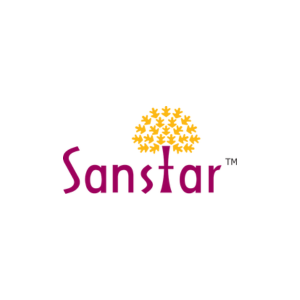
- Issue Date 19 Jul - 23 Jul
- Allotment Date 24-Jul-24
- Price Range ₹ 90 to ₹ 95
- IPO Size ₹ 510.15 Cr

- Issue Date 3 Jul - 5 Jul
- Allotment Date 08-Jul-24
- Price Range ₹ 243 to ₹256
- IPO Size ₹ 745 Cr

- Issue Date 3 Jul - 5 Jul
- Allotment Date 08-Jul-24
- Price Range ₹ 960 to ₹ 1008
- IPO Size ₹ 1,952.03 Cr

- Issue Date 26 Jun - 28 Jun
- Allotment Date 01-Jul-24
- Price Range ₹ 195 to ₹ 207
- IPO Size ₹ 171 Cr

- Issue Date 25 Jun - 27 Jun
- Allotment Date 28-Jun-24
- Price Range ₹ 267 to ₹ 281
- IPO Size ₹ 1500 Cr

- Issue Date 21 Jun - 25 Jun
- Allotment Date 26-Jun-24
- Price Range ₹ 351 to ₹369
- IPO Size ₹ 537.02 Cr

- Issue Date 19 Jun - 21 Jun
- Allotment Date 24-Jun-24
- Price Range ₹ 193 to ₹ 203
- IPO Size ₹ 418.01 Cr

- Issue Date 19 Jun - 21 Jun
- Allotment Date 24-Jun-24
- Price Range ₹ 114 to ₹ 120
- IPO Size ₹ 132 Cr

- Issue Date 10 Jun - 12 Jun
- Allotment Date 13-Jun-24
- Price Range ₹ 88 to ₹ 93
- IPO Size ₹ 740.10 Cr

- Issue Date 3 Jun - 5 Jun
- Allotment Date 06-Jun-24
- Price Range ₹ 129 to ₹ 136
- IPO Size ₹ 130.15 Cr

- Issue Date 22 May - 27 May
- Allotment Date 28-May-24
- Price Range ₹ 364 to ₹ 383
- IPO Size ₹ 598.93 Cr

- Issue Date 15 May - 17 May
- Allotment Date 21-May-24
- Price Range ₹ 258 to ₹ 272
- IPO Size ₹ 2,614.65 Cr

- Issue Date 8 May - 10 May
- Allotment Date 13-May-24
- Price Range ₹ 875 to ₹ 920
- IPO Size ₹ 1,550.81 Cr

- Issue Date 8 May - 10 May
- Allotment Date 13-May-24
- Price Range ₹ 300 to ₹ 315
- IPO Size ₹ 3,000 Cr

- Issue Date 6 May - 8 May
- Allotment Date 09-May-24
- Price Range ₹ 430 to ₹ 452
- IPO Size ₹ 1841.76 Cr

- Issue Date 23 Apr - 25 Apr
- Allotment Date 26-Apr-24
- Price Range ₹ 395 to ₹ 415
- IPO Size ₹ 649.47 Cr

- Issue Date 18 Apr - 22 Apr
- Allotment Date 23-Apr-24
- Price Range ₹ 10 to ₹ 11
- IPO Size ₹ 18000 Cr

- Issue Date 3 Apr - 5 Apr
- Allotment Date 08-Apr-24
- Price Range ₹ 542 to ₹570
- IPO Size ₹ 4,275 Cr
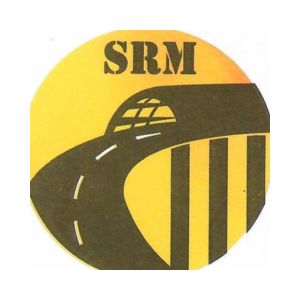
- Issue Date 26 Mar - 28 Mar
- Allotment Date 01-Apr-24
- Price Range ₹ 200 to ₹ 210
- IPO Size ₹ 130.20 Cr
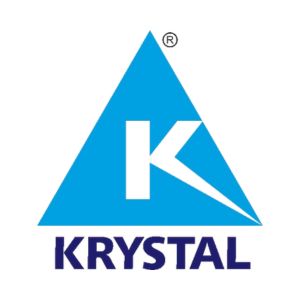
- Issue Date 14 Mar - 18 Mar
- Allotment Date 19-Mar-24
- Price Range ₹ 680 to ₹ 715
- IPO Size ₹ 300.13 Cr

- Issue Date 12 Mar - 14 Mar
- Allotment Date 15-Mar-24
- Price Range ₹ 280 to ₹ 295
- IPO Size ₹ 601.55 Cr

- Issue Date 6 Mar - 11 Mar
- Allotment Date 12-Mar-24
- Price Range ₹ 381 to ₹ 401
- IPO Size ₹ 650 Cr

- Issue Date 5 Mar - 7 Mar
- Allotment Date 11-Mar-24
- Price Range ₹ 210 to ₹ 221
- IPO Size ₹ 251.19 Cr

- Issue Date 4 Mar - 6 Mar
- Allotment Date 07-Mar-24
- Price Range ₹ 270 to ₹ 288
- IPO Size ₹ 423.56 Cr

- Issue Date 29 Feb - 4 Mar
- Allotment Date 05-Mar-24
- Price Range ₹ 26 to ₹ 28
- IPO Size ₹ 224 Cr

- Issue Date 28 Feb - 1 Mar
- Allotment Date 04-Mar-24
- Price Range ₹ 98 to ₹ 100
- IPO Size ₹ 2500 Cr

- Issue Date 27 Feb - 29 Feb
- Allotment Date 01-Mar-24
- Price Range ₹ 162 to ₹ 171
- IPO Size ₹ 235.32 Cr

- Issue Date 27 Feb - 29 Feb
- Allotment Date 01-Mar-24
- Price Range ₹ 135 to ₹ 142
- IPO Size ₹ 429 Cr

- Issue Date 22 Feb - 26 Feb
- Allotment Date 27-Feb-24
- Price Range ₹ 177 to ₹ 186
- IPO Size ₹ 525.14 Cr

- Issue Date 21 Feb - 23 Feb
- Allotment Date 26-Feb-24
- Price Range ₹ 342 to ₹ 360
- IPO Size ₹ 1800 Cr

- Issue Date 13 Feb - 15 Feb
- Allotment Date 16-Feb-24
- Price Range ₹ 141 to ₹ 151
- IPO Size ₹ 72.17 Cr

- Issue Date 9 Feb - 13 Feb
- Allotment Date 14-Feb-24
- Price Range ₹ 1195 to ₹ 1258
- IPO Size ₹ 1,600 Cr

- Issue Date 7 Feb - 9 Feb
- Allotment Date 12-Feb-24
- Price Range ₹ 445 to ₹ 468
- IPO Size ₹ 523 Cr

- Issue Date 7 Feb - 9 Feb
- Allotment Date 12-Feb-24
- Price Range ₹ 295 to ₹ 311
- IPO Size ₹ 600 Cr

- Issue Date 7 Feb - 9 Feb
- Allotment Date 12-Feb-24
- Price Range ₹ 393 to ₹ 414
- IPO Size ₹ 570 Cr

- Issue Date 5 Feb - 7 Feb
- Allotment Date 08-Feb-24
- Price Range ₹ 147 to ₹ 155
- IPO Size ₹ 920 Cr

- Issue Date 30 Jan - 1 Feb
- Allotment Date 02-Feb-24
- Price Range ₹ 129 to ₹ 135
- IPO Size ₹ 325.76 Cr

- Issue Date 23 Jan - 25 Jan
- Allotment Date 29-Jan-24
- Price Range ₹ 39 to ₹ 41
- IPO Size ₹ 143.81 Cr

- Issue Date 19 Jan - 24 Jan
- Allotment Date 25-Jan-24
- Price Range ₹ 218 to ₹ 230
- IPO Size ₹ 640.05 Cr

- Issue Date 15 Jan - 17 Jan
- Allotment Date 18-Jan-24
- Price Range ₹ 397 to ₹ 418
- IPO Size ₹ 1171.58 Cr
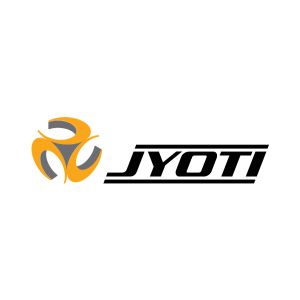
- Issue Date 9 Jan - 11 Jan
- Allotment Date 12-Jan-24
- Price Range ₹ 315 to ₹ 331
- IPO Size ₹ 1,000 Cr

- Issue Date 21 Dec - 26 Dec
- Allotment Date 27-Dec-23
- Price Range ₹ 426 to ₹ 448
- IPO Size ₹ 570 Cr

- Issue Date 20 Dec - 22 Dec
- Allotment Date 26-Dec-23
- Price Range ₹ 499 to ₹ 524
- IPO Size ₹ 740 Cr

- Issue Date 19 Dec - 21 Dec
- Allotment Date 22-Dec-23
- Price Range ₹ 95 to ₹ 100
- IPO Size ₹ 100 Cr

- Issue Date 19 Dec - 21 Dec
- Allotment Date 22-Dec-23
- Price Range ₹ 266 to ₹ 280
- IPO Size ₹ 549.78 Cr

- Issue Date 19 Dec - 21 Dec
- Allotment Date 22-Dec-23
- Price Range ₹ 808 to ₹ 850
- IPO Size ₹ 1008.59 Cr

- Issue Date 18 Dec - 20 Dec
- Allotment Date 21-Dec-23
- Price Range ₹ 52 to ₹ 55
- IPO Size ₹ 151.09 Cr

- Issue Date 18 Dec - 20 Dec
- Allotment Date 21-Dec-23
- Price Range ₹ 340 to ₹ 360
- IPO Size ₹ 400 Cr

- Issue Date 18 Dec - 20 Dec
- Allotment Date 21-Dec-23
- Price Range ₹ 277 to ₹ 291
- IPO Size ₹ 960 Cr

- Issue Date 14 Dec - 18 Dec
- Allotment Date 19-Dec-23
- Price Range ₹ 627 to ₹ 660
- IPO Size ₹ 1,459.32 Cr

- Issue Date 13 Dec - 15 Dec
- Allotment Date 18-Dec-23
- Price Range ₹ 469 to ₹ 493
- IPO Size ₹ 1200 Cr

- Issue Date 13 Dec - 15 Dec
- Allotment Date 18-Dec-23
- Price Range ₹ 750 to ₹ 790
- IPO Size ₹ 1,200 Cr

- Issue Date 22 Nov - 24 Nov
- Allotment Date 30-Nov-23
- Price Range ₹ 160 to ₹ 169
- IPO Size ₹ 500.69 Cr

- Issue Date 22 Nov - 24 Nov
- Allotment Date 29-Nov-23
- Price Range ₹ 288 to ₹ 304
- IPO Size ₹ 593 Cr
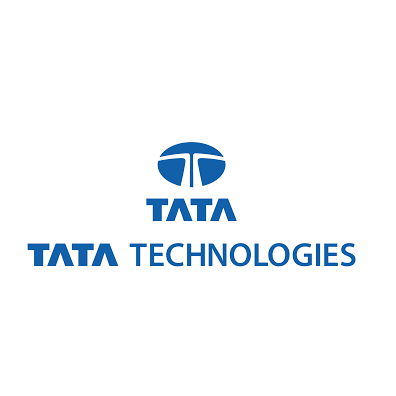
- Issue Date 22 Nov - 24 Nov
- Allotment Date 28-Nov-23
- Price Range ₹ 475 to ₹ 500
- IPO Size ₹ 3042.51 Cr

- Issue Date 22 Nov - 24 Nov
- Allotment Date 28-Nov-23
- Price Range ₹ 133 to ₹ 140
- IPO Size ₹ 1,100.00 Cr
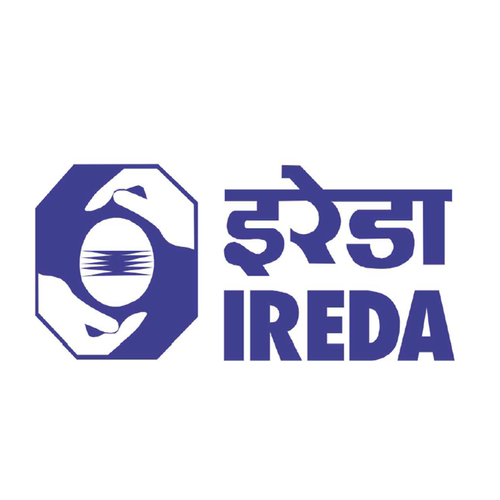
- Issue Date 21 Nov - 23 Nov
- Allotment Date 28-Nov-23
- Price Range ₹ 30 to ₹ 32
- IPO Size ₹ 2150.21 Cr

- Issue Date 7 Nov - 9 Nov
- Allotment Date 15-Nov-23
- Price Range ₹ ₹ 268 to ₹ 282
- IPO Size ₹ 833.91 Cr

- Issue Date 3 Nov - 7 Nov
- Allotment Date 09-Nov-23
- Price Range ₹ 57 to ₹ 60
- IPO Size ₹ 463.00 Cr

- Issue Date 31 Oct - 2 Nov
- Allotment Date 07-Nov-23
- Price Range ₹ 308 to ₹ 324
- IPO Size ₹ 1,701 Cr

- Issue Date 30 Oct - 1 Nov
- Allotment Date 06-Nov-23
- Price Range ₹ 617 to ₹ 648
- IPO Size ₹ 1900 Cr

- Issue Date 25 Oct - 27 Oct
- Allotment Date 01-Nov-23
- Price Range ₹ 329 to ₹346
- IPO Size ₹ 840.27 Cr

- Issue Date 18 Oct - 20 Oct
- Allotment Date 27-Oct-23
- Price Range ₹ 480 to ₹ 505
- IPO Size ₹ 545.40 Cr

- Issue Date 29 Sep - 5 Oct
- Allotment Date 10-Oct-23
- Price Range ₹ 51 to ₹ 54
- IPO Size ₹ 71.28 Cr

- Issue Date 27 Sep - 3 Oct
- Allotment Date 05-Oct-23
- Price Range ₹ 133 to ₹ 140
- IPO Size ₹ 152.46 Cr

- Issue Date 25 Sep - 27 Sep
- Allotment Date 04-Oct-23
- Price Range ₹ 280 to ₹ 300
- IPO Size ₹ 640 Cr

- Issue Date 25 Sep - 27 Sep
- Allotment Date 03-Oct-23
- Price Range ₹ 113 to ₹ 119
- IPO Size ₹ 2,800 Cr

- Issue Date 22 Sep - 26 Sep
- Allotment Date 03-Oct-23
- Price Range ₹ 204 to ₹ 215
- IPO Size ₹ 270.20 Cr

- Issue Date 20 Sep - 22 Sep
- Allotment Date 27-Sep-23
- Price Range ₹ 366 to ₹ 385
- IPO Size ₹ 730 Cr

- Issue Date 20 Sep - 22 Sep
- Allotment Date 27-Sep-23
- Price Range ₹ 210 to ₹ 222
- IPO Size ₹ 1201 Cr
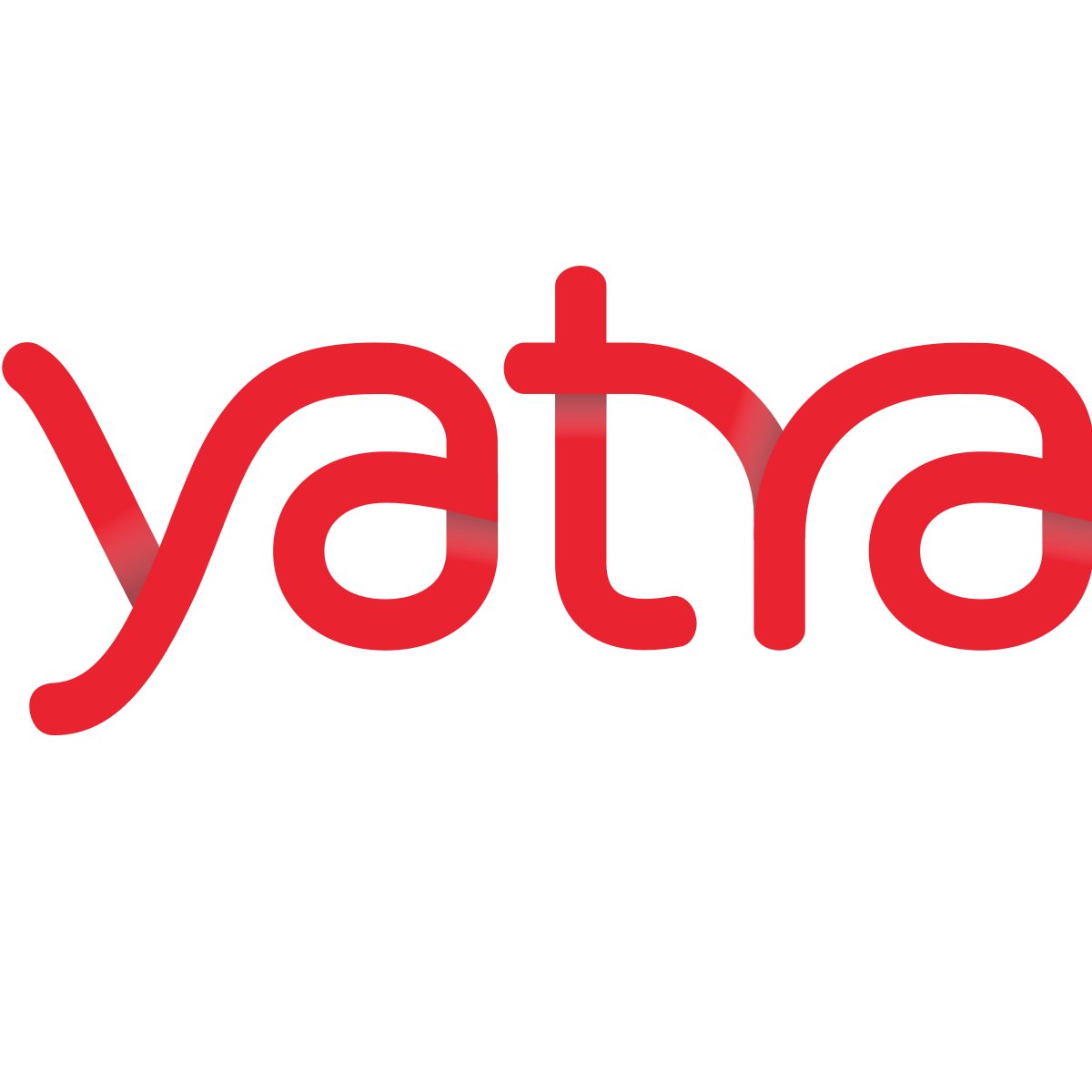
- Issue Date 15 Sep - 20 Sep
- Allotment Date 25-Sep-23
- Price Range ₹ 135 to ₹ 142
- IPO Size ₹ 775 Cr

- Issue Date 14 Sep - 18 Sep
- Allotment Date 22-Sep-23
- Price Range ₹ 119 to ₹ 126
- IPO Size ₹ 1,370.10 Cr

- Issue Date 14 Sep - 18 Sep
- Allotment Date 22-Sep-23
- Price Range ₹ 156 to ₹ 164
- IPO Size ₹ 563.38 Cr

- Issue Date 13 Sep - 15 Sep
- Allotment Date 21-Sep-23
- Price Range ₹ 983 to ₹ 1035
- IPO Size ₹ 1,964.01 Cr

- Issue Date 8 Sep - 12 Sep
- Allotment Date 15-Sep-23
- Price Range ₹ 200 to ₹ 211
- IPO Size ₹ 321.24 Cr

- Issue Date 6 Sep - 8 Sep
- Allotment Date 13-Sep-23
- Price Range ₹ 695 to ₹ 735
- IPO Size ₹ 869.08 Cr
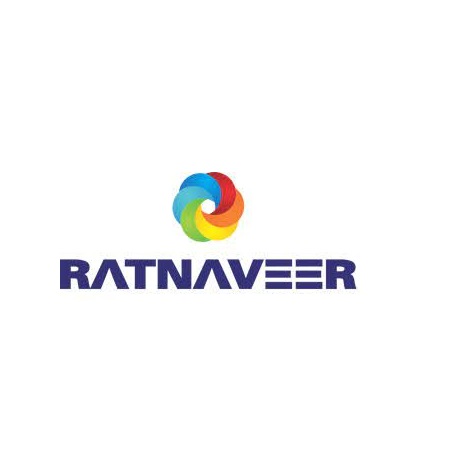
- Issue Date 4 Sep - 6 Sep
- Allotment Date 11-Sep-23
- Price Range ₹ 93 to ₹ 98
- IPO Size ₹ 165.03 Cr

- Issue Date 30 Aug - 1 Sep
- Allotment Date 06-Sep-23
- Price Range ₹ 418 to ₹ 441
- IPO Size ₹ 490.78 Cr

- Issue Date 24 Aug - 28 Aug
- Allotment Date 31-Aug-23
- Price Range ₹ 94 to ₹99
- IPO Size ₹ 308.88 Cr

- Issue Date 22 Aug - 24 Aug
- Allotment Date 29-Aug-23
- Price Range ₹ 102 to ₹ 108
- IPO Size ₹ 351 Cr

- Issue Date 18 Aug - 22 Aug
- Allotment Date 25-Aug-23
- Price Range ₹ 151 to ₹ 166
- IPO Size ₹ 153.05 Cr

- Issue Date 10 Aug - 14 Aug
- Allotment Date 18-Aug-23
- Price Range ₹ 187 to ₹ 197
- IPO Size ₹ 600 Cr

- Issue Date 4 Aug - 8 Aug
- Allotment Date 11-Aug-23
- Price Range ₹ 705 to ₹ 741
- IPO Size ₹ 1,551 Cr
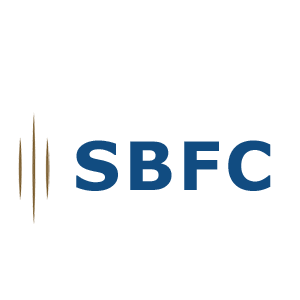
- Issue Date 3 Aug - 7 Aug
- Allotment Date 10-Aug-23
- Price Range ₹ 54 to ₹ 57
- IPO Size ₹ 1,025 Cr

- Issue Date 26 Jul - 28 Jul
- Allotment Date 02-Aug-23
- Price Range ₹ 285 to ₹ 300
- IPO Size ₹ 686 Cr

- Issue Date 17 Jul - 19 Jul
- Allotment Date 24-Jul-23
- Price Range ₹ 475 to ₹500
- IPO Size ₹ 631 Cr

- Issue Date 12 Jul - 14 Jul
- Allotment Date 19-Jul-23
- Price Range ₹ 23 to ₹ 25
- IPO Size ₹ 500 Cr

- Issue Date 4 Jul - 6 Jul
- Allotment Date 11-Jul-23
- Price Range ₹ 301 to ₹ 317
- IPO Size ₹ 405.00 Cr

- Issue Date 27 Jun - 30 Jun
- Allotment Date 05-Jul-23
- Price Range ₹ 250 to ₹ 265
- IPO Size ₹ 592 Cr

- Issue Date 26 Jun - 30 Jun
- Allotment Date 04-Jul-23
- Price Range ₹ 638 to ₹ 672
- IPO Size ₹ 567 Cr

- Issue Date 20 Jun - 23 Jun
- Allotment Date 29-Jun-23
- Price Range ₹ 555 to ₹ 585
- IPO Size ₹ 480 Cr

- Issue Date 6 Jun - 8 Jun
- Allotment Date 13-Jun-23
- Price Range ₹ 270 to ₹ 285 per share
- IPO Size ₹ 607 Cr

- Issue Date 9 May - 11 May
- Allotment Date 16-May-23
- Price Range ₹ 95 to ₹ 100
- IPO Size ₹ 3200 Cr

- Issue Date 25 Apr - 27 Apr
- Allotment Date 03-May-23
- Price Range ₹ 1026 to ₹1080
- IPO Size ₹ 4326.36 Cr
IPO allotment status is received by investors during the allotment procedure. The alerts give details on the allocation procedure and disclose the timeline. It assists investors in making better decisions. The registrar publishes the IPO allotment computation based on the allotment document. Once the allotment is complete, investors can check their IPO allotment by going to the registrar's website (Linkintime, Karvy, for example). IPO investors are also notified by email and SMS about the updated IPO allotment status by BSE, NSE, CDSL, and NSDL.
IPO allotment status is a critical step in the IPO process, informing investors about the number of shares they have been allocated after applying for an IPO. Once an IPO closes, the company and its registrars gather all the applications and calculate the allotment based on the demand and the total shares available. The IPO allotment status indicates whether an investor's application was successful and, if so, how many shares were allotted.
Understanding the IPO allotment status is vital as it helps investors prepare for the next steps, like planning for listing day or making future investment decisions. In cases where an IPO is oversubscribed, the allotment process becomes more complicated, often using a lottery or proportional distribution system to ensure fair allocation. Knowing your IPO allotment check results allows you to assess your investment outcomes ahead of the shares being listed on the stock exchange.
If you're wondering how to check IPO allotment, there are several ways to do it. You can check the BSE IPO status or the NSE IPO allotment by following these simple steps:
● Visit the BSE Website: Head over to the official BSE site and locate the 'Status of Issue Application' section. Alternatively, you can access the BSE IPO allotment check page directly.
● Select the Issue Type: Choose 'Equity' from the dropdown menu under the 'Issue Type' section.
● Select the IPO Company: From the list, pick the company whose IPO you applied for.
● Enter Your Details: Input your application number or PAN (Permanent Account Number) in the required field and click submit.
Via Registrar Websites:
Platforms like Link Intime or KFintech also offer an easy way to perform an IPO allotment status check online. You can access these sites and follow similar steps to get the status.
By following these methods, you can easily perform an IPO allotment status check online by PAN number or application number, ensuring you know how many shares you've been allocated.
The IPO allotment process is based on the demand for shares versus the supply available. When an IPO is oversubscribed, meaning more shares were requested than available, the calculation of the allotment becomes more complex. For retail investors, shares are usually distributed proportionally based on the size of their application. In cases of significant oversubscription, a lottery system is often used to ensure fairness, which can result in some applicants receiving no shares at all.
For High Net-Worth Individuals (HNIs) and institutional investors, shares are allocated in proportion to the size of their bids. SEBI regulates this entire process to ensure transparency and fairness, with specific rules to manage fractional shares. This guarantees that the allocation of shares is handled efficiently and equitably.
The process of IPO allotment depends on the category of the investor and the level of subscription the IPO received:
● If an IPO is undersubscribed in all investor categories, every valid application will receive a full allotment. The IPO is considered successful if it meets at least 90% of the total subscription.
● In cases of oversubscription in one category and under subscription in another, shares can be adjusted between categories, except for QIB (Qualified Institutional Buyers).
● If oversubscription occurs across all categories, the issuer either allocates shares proportionally or uses a lottery system to distribute shares fairly.
To verify the BSE IPO status or NSE IPO allotment, you can use the registrar’s website or visit the NSE and BSE websites. You'll need your bid application number, DPID/Client ID, or PAN for an IPO allotment status check online by PAN number.
Steps to Check BSE IPO Allotment Status Online:
1. Visit the official BSE IPO allotment check page.
2. Select 'Equity' under the 'Issue Type' section.
3. Choose the IPO company you invested in.
4. Enter your application number or PAN, and submit to view your BSE IPO status.
The IPO registrar plays a crucial role in the allotment process. The best scenario for an investor is one of the following:
Undersubscribed IPO: If fewer bids are received than shares available, the registrar simply allocates the desired number of shares to all qualified investors.
Oversubscribed IPO: In case of oversubscription, the registrar follows SEBI's guidelines to ensure each valid application gets at least one lot of shares. In extreme cases, a lottery system may be employed.
By understanding how the IPO allotment works and knowing where to perform your IPO allotment status check online, you can stay informed and make better investment decisions. Whether you're using the BSE IPO allotment check or exploring other platforms, staying updated ensures you’re prepared for the next step in your investment journey.
Be a part of 5paisa community - The first listed discount broker of India.
By proceeding, you agree to all T&C*
Trending News about IPOs
- 08-04-2025
- 08-04-2025
- 07-04-2025
- 03-04-2025
FAQs
The way the initial public offering (IPO) gets a response from investors will determine how shares are allocated. Investors may receive all of the lots for which they applied if the IPO is under-subscribed. If the IPO is oversubscribed, it means that shares are allocated to retail investors through a computerized procedure.
The greatest strategy to maximize your chances of receiving an IPO allotment is to apply using various Demat accounts, preferably in the names of family members, which diversifies your application. Finally, make sure you submit your application on time and avoid last-minute rushes, which might lead to mistakes and rejection of applications.
The return of the funds is free of charge. An investor's account is restricted when they apply online for an IPO. That sum is not redeemed by the investor. Until the allotment for an IPO is approved, this amount will remain frozen. If the person applies offline with a cheque, the return process begins when the basis of allotment is finalized.
The IPO allotment procedure will take a maximum of one week, according to the most recent SEBI guidelines for large-cap IPOs. Within seven days of the IPO closing, the registrars are required by SEBI regulations to distribute the IPO allotment.
No, shares are not allocated for the IPO based on a first-come, first-served basis. You might obtain as many lots as you applied for if the IPO is under subscribed. The distribution of shares to retail investors if there is an oversupply due to strong investor demand is determined by dividing the total number of shares in the retail quota by the minimum lot size.
IPO Allotment status is available on the registrar's website. By entering their PAN or the IPO allocation number, an investor can verify the status of their allotment.
After the IPO shares have been alloted, check your Demat account to confirm the allotment. Then, decide on your investing strategy—whether to keep the shares for possible long-term profits or to sell them on the listing day for an instant profit. Monitor market circumstances leading up to the listing date to make an informed choice, and keep track of the company's success to assess future moves.
Yes, in order to be eligible for IPO allotment, investors must apply for at least one "lot," which is the smallest number of shares that may be requested for during an IPO. The lot size is decided by the firm and is disclosed in the IPO prospectus. If the IPO is oversubscribed, allotments are made based on the number of lots applied for, and a lottery mechanism may be employed for small investors to guarantee equal distribution.
A Bank user can access the IPO Application Status by logging into their net banking account > going to e-Services Demat Services > ASBA Services > IPO (Equity) > IPO History
By registering on the official registrar's website or the BSE website, IPO bidders can access their allotment status online. BSEindia.com/investors/appli_check.aspx is the direct URL of the BSE website. Additionally, bidders have the option to check in via the registrar's website; the webpage link is disclosed in the IPO issuing company's prospectus.














































































